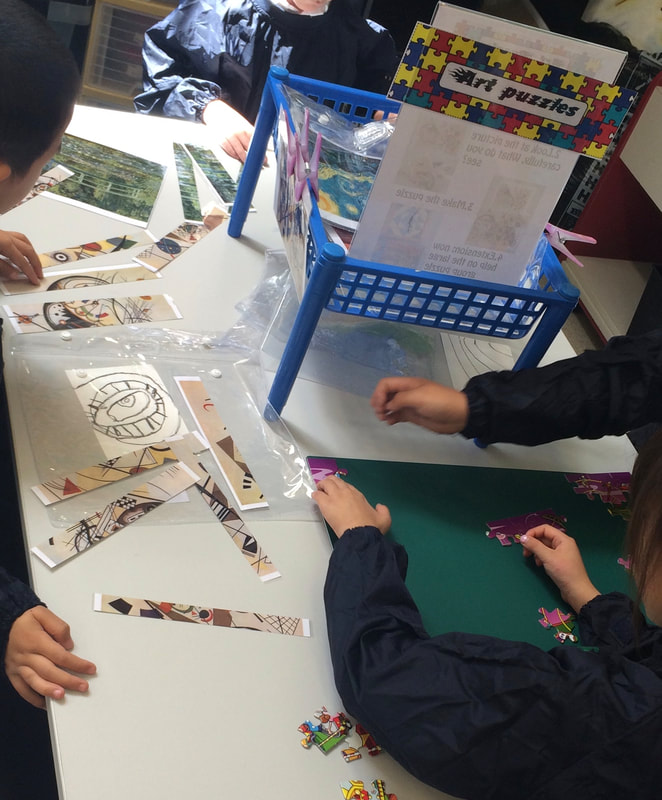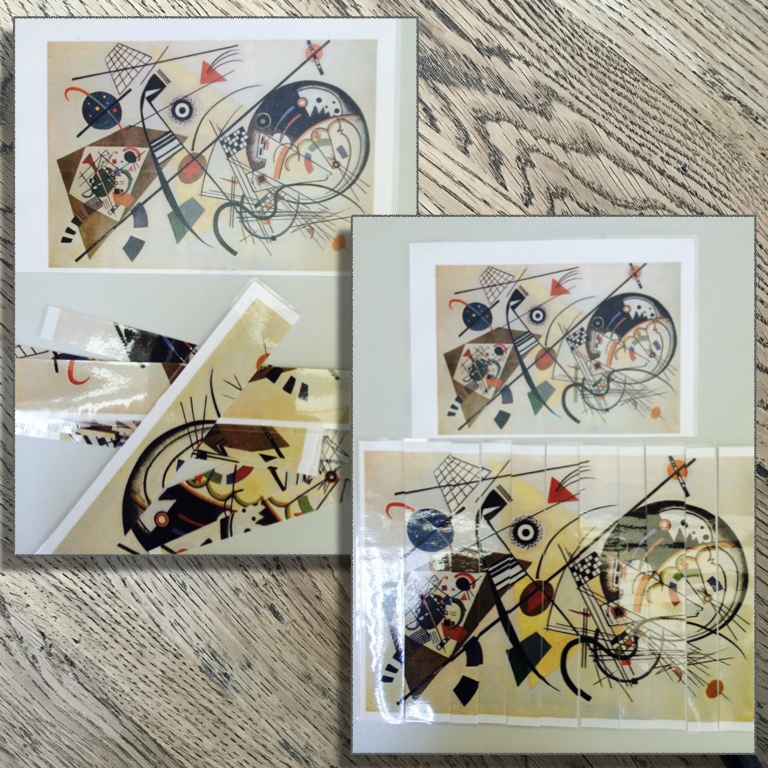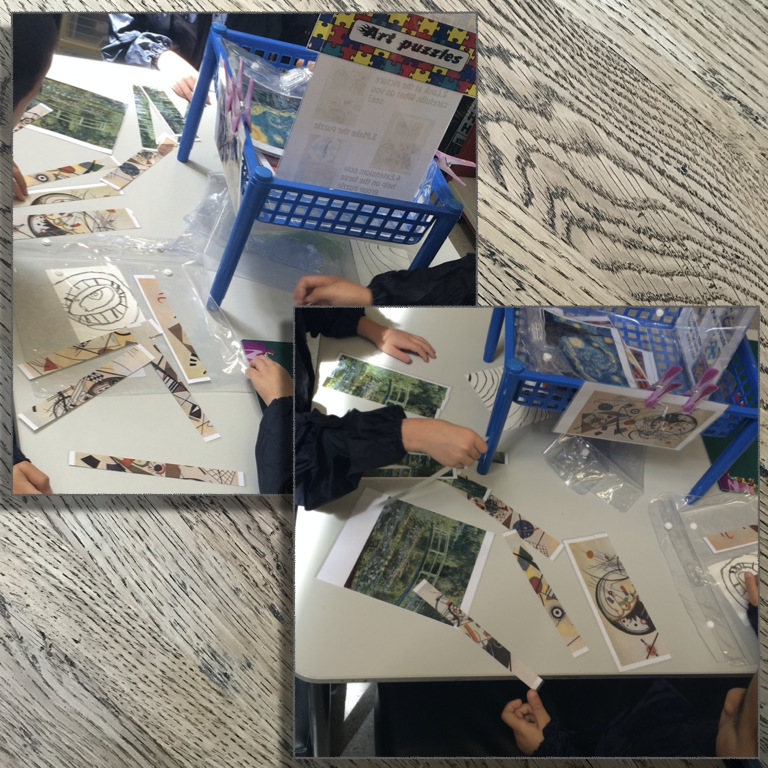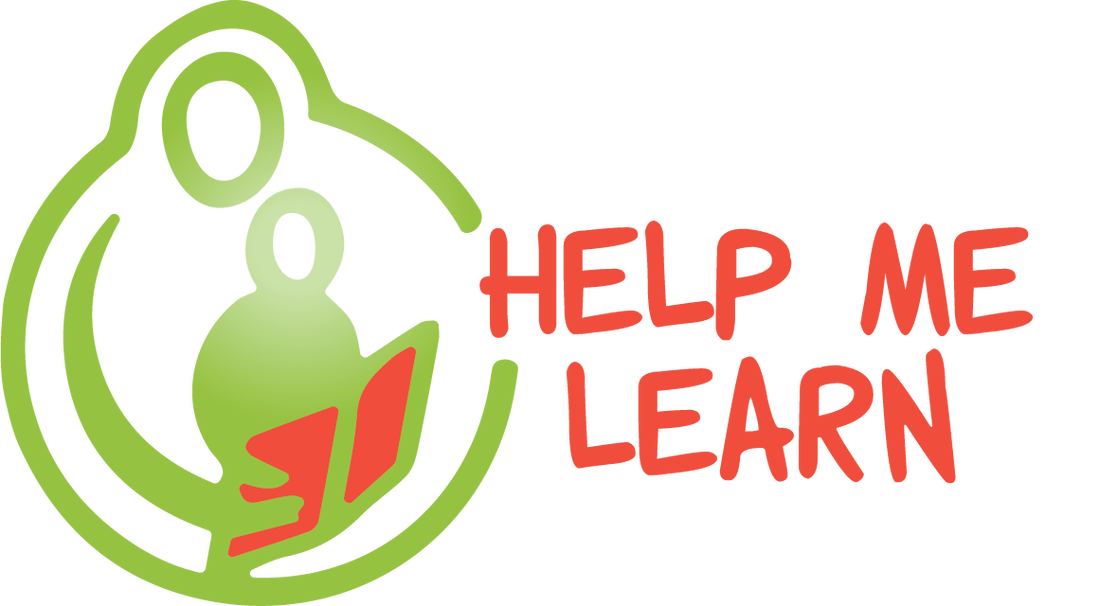|
If you thought the inclusion of devices in classrooms had made puzzles obsolete, think again! Although you’re more likely to see kids learning digitally these days, rather than putting together traditional puzzles, including these in independent centres can have surprising benefits for your learners. A quick and inexpensive way to include puzzles in your classroom is to print 2 copies of clear images of your favourite artworks. Laminate both to help them last longer. Keep one for a master and cut the other one up. The complexity of the cuts and sizes of the pieces will depend on the level you teach. In this post I have included images of my puzzle centre in use - perennial favourite among students of all levels. MemorySolving puzzles helps reinforce existing connections between our brain cells, improves mental speed and thought processes. Furthermore, puzzle-solving improves our short-term memory which helps us notice and remember small details, then visualise how these might fit into the bigger picture. Problem-solving SkillsCreative problem-solving and critical thinking skills are becoming increasingly valued in the workforce today. Puzzles help us to develop these important skills. Puzzles require us to trial different approaches when solving a problem because there is a lot of trial and error involved. Students learn to formulate theories, test hypotheses, and change perspectives when something doesn’t work. Visual-Spacial ReasoningSolving a jigsaw puzzle gets children to look at many different pieces and figure out where they fit within the larger picture. Better visual-spacial skills help with a number of everyday tasks, including:
Positive Attitude & CalmnessPuzzles also increase our brains’ production of dopamine, a neurotransmitter that regulates mood and feelings of optimism. This also affects memory, concentration, and motivation. Dopamine is released every time we successfully solve a puzzle — or even just get one piece in the right place. This encourages students to continue working on solving them and challenging themselves. Puzzles also help us to relax as our brains go from a “Beta,” or wakeful, state to an “Alpha” state when we’re solving puzzles. The Alpha state is similar to the state we’re in when we’re dreaming. This shift in consciousness comes with many benefits, including: Ability to make deeper connections Improved mindset Relieve stress Improve mood Increase our self-confidence Attention to Detail & Increased Productivity Attention to detail is crucial. You need to train your eyes to pick out slight similarities and differences in line, colour or shape that will help you put everything together. An ability to pick up on small details helps in every other aspect of learning. When students are more detail oriented and precise, the quality of their school work improves. Happier, calmer students concentrate better and their productivity levels increase. A puzzle break can help to reset the brain for focused learning. CollaborationPuzzles also build collaboration between learners. Researchers found that giving learners the opportunity to work together on solving puzzles, allows them to improve their relationships and their abilities to cooperate over completing a task. Including more complex learning tasks later on. Puzzles & AdultsAnd if you like the sound of all of this, puzzles have great benefits for adults too. They delay the symptoms of dementia and Alzheimer’s disease. Keeping the mind active through puzzles and other problem-solving activities can reduce the amount of brain cell damage that occurs in Alzheimer’s patients. It also supports the growth of new nerve cells and strengthens the connections between them. Researchers have also found a correlation between the number of years someone has been solving puzzles and the likelihood that they will develop Alzheimer’s. So, the sooner you start making puzzles a regular part of your family and classroom life, the better. It’s never too early to start protecting your brain. Kia Kaha (stay strong) With love Mea Make Art Puzzles For Your Classroom
$3.00
Thank you for your interest in this resource. This is a print and easy to prepare learning resource to help you create a logic centre in your classroom. Can also fit into Art, Maths and collaborative task centres. Read my blog post about the benefits to your students when you offer puzzles in the classroom. https://www.help-me-learn.com/blog/the-benefits-of-solving-puzzles-for-children This resource contains 10 full colour images of masters artworks in the Public Domain with Creative Commons licensing. They have simple cut-line overlays for you to start with. You can make the puzzles more complex later by adding more cuts. A reference image for each puzzle is also included for students to use as a guide. View the images for more information. ------------------------------------------------------------------------------------------------ TEACHERS SUPPORTING TEACHERS ❤️ Connect with Help MeLearn by following this store on Instagram and Facebook. Be the first to learn about new products added to the store Please preview the photos before you buy. If you have any questions, please contact me BEFORE you purchase. ⭐️ ⭐️ ⭐️ ⭐️ ⭐️ If you value this resource, please leave a strong rating to encourage other teachers. Every care is taken with editing this resource and at times, errors can still sneak through. Rather than leaving a negative rating, contact me directly and be specific in your feedback so that I can make those improvement and give you, and others the best quality resource.
0 Comments
Your comment will be posted after it is approved.
Leave a Reply. |
Thoughts on TeachingStuck for ideas? Grab a cup of tea, put your feet up and settle in to read my teaching blog focused on all matters in teaching and Visual Art. Archives
March 2023
Categories |




 RSS Feed
RSS Feed
